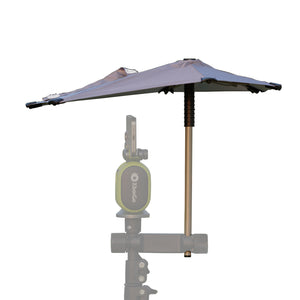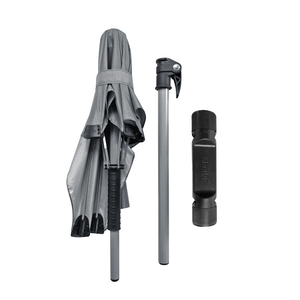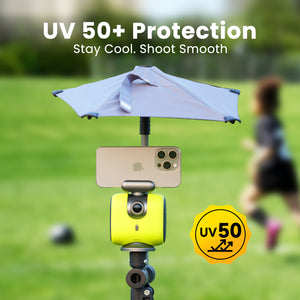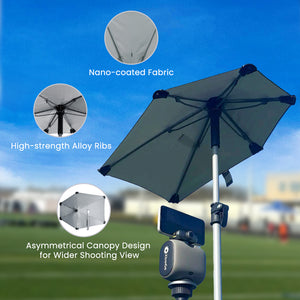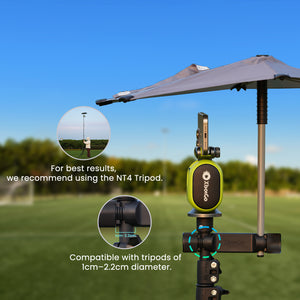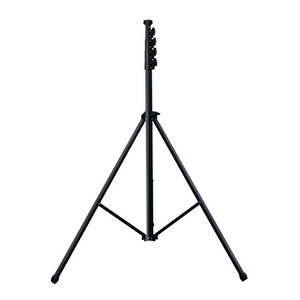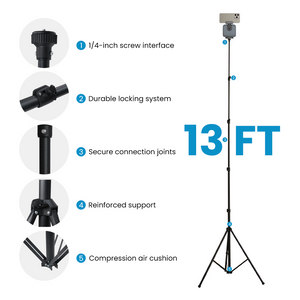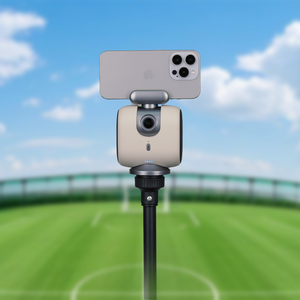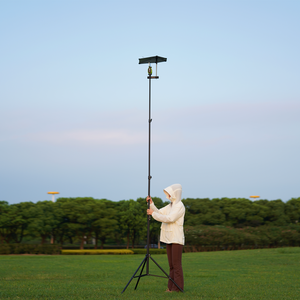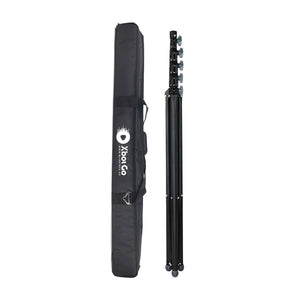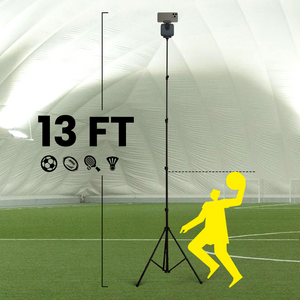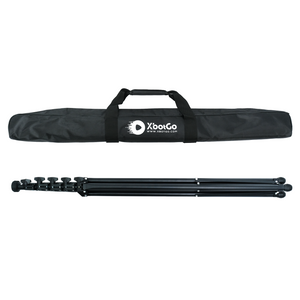XbotGo Chameleon AI Sports Camera
Wie viele Drittel gibt es im Eishockey? Der Leitfaden zu Spielstruktur und Zeitablauf
Falls Sie sich jemals über die einzigartige Spielstruktur im Eishockey gewundert haben, sind Sie nicht allein. Die Antwort ist einfach: Eishockeyspiele bestehen aus drei Dritteln à 20 Minuten . Doch die Geschichte hinter diesem Format – und was es für Spieler, Fans und das Spiel selbst bedeutet – ist faszinierend.
Die Grundstruktur
Drei Perioden erklärt
Ein typisches Eishockeyspiel besteht aus drei Dritteln, die jeweils genau 20 Minuten dauern. Anders als in manchen Sportarten, wo die Uhr durchgehend läuft, wird beim Eishockey die sogenannte Stoppzeit verwendet. Das bedeutet, dass die Uhr angehalten wird, sobald das Spiel unterbrochen wird. Dadurch wird sichergestellt, dass die Teams volle 60 Minuten Spielzeit erhalten.
Zwischen den Dritteln legen die Teams 15- bis 18-minütige Pausen ein. Die NHL hat die Pausen auf 18 Minuten standardisiert, wobei es in unteren Ligen und bei internationalen Turnieren leichte Abweichungen geben kann. Während dieser Pausen wird das Eis neu präpariert, die Spieler ruhen sich aus und besprechen ihre Strategie, und die Fans haben Zeit, sich mit Erfrischungen zu versorgen.
Mit Spielunterbrechungen, Pausen und möglicher Verlängerung dauert ein typisches Eishockeyspiel zwischen 2,5 und 3 Stunden – deutlich länger als die 60 Minuten reine Spielzeit.
Wie es sich im Vergleich zu anderen Sportarten verhält
Die Drei-Drittel-Struktur im Eishockey ist in der Welt der großen Sportarten einzigartig. Während Basketball und American Football ihre Spiele in vier Viertel und Fußball in zwei Hälften unterteilen, hat Eishockey seinen eigenen Weg beschritten . Dabei geht es nicht nur um Andersartigkeit – es ist ein Format, das aus praktischer Notwendigkeit entstanden ist.
Das Drei-Drittel-System bietet Eishockey entscheidende Vorteile. Die Teams erhalten zwei längere Pausen zur Erholung und für taktische Anpassungen, während die Eisfläche zweimal pro Spiel einer wichtigen Instandsetzung unterzogen wird. Diese Struktur ist so eng mit der Identität des Eishockeys verbunden, dass sich viele Fans das Spiel gar nicht mehr anders vorstellen können.
Warum Eishockey drei Drittel hat
Die Evolution aus zwei Hälften
Eishockey wurde nicht immer in drei Dritteln gespielt. Vor 1910 bestanden die Spiele aus zwei 30-minütigen Hälften , ähnlich wie beim Fußball. Das Eis verschlechterte sich während dieser langen Spielphasen erheblich, wodurch gefährliche Spurrillen entstanden und sich Schnee ansammelte, der das Spielgeschehen stark verlangsamte.
Die Brüder Lester und Frank Patrick revolutionierten den Eishockeysport, als sie zur Saison 1910/11 das Drei-Drittel-Format einführten. Diese Eishockey-Pioniere erkannten, dass die Aufteilung des Spiels in drei 20-minütige Abschnitte mehrere Probleme gleichzeitig lösen würde. Die National Hockey Association (Vorgängerin der NHL) übernahm dieses Format rasch, und es wurde zum Standard, als die NHL 1917 gegründet wurde.
Die Änderung trug der zunehmenden Geschwindigkeit und Intensität des Sports Rechnung. Mit steigendem Können der Spieler und aggressiverem Spielstil wurde die Eisfläche stärker beansprucht. Was in der früheren, langsameren Ära des Eishockeys funktioniert hatte, genügte den Anforderungen des modernen Spiels nicht mehr.
Die Geschäftslogik
Obwohl die Eisqualität den Anstoß für die ursprüngliche Änderung gab, wurden die wirtschaftlichen Vorteile schnell deutlich. Zwei Drittelpausen statt einer bedeuteten doppelt so viele Möglichkeiten für den Gastronomiebetrieb. Die Fans konnten zweimal pro Spiel Speisen und Getränke kaufen, ohne etwas vom Spielgeschehen zu verpassen, was die Einnahmen des Stadions deutlich steigerte.
Das Format verbesserte auch das Zuschauererlebnis. Anstatt einer langen Pause hatten die Fans zwei Gelegenheiten, sich auszutauschen, die sanitären Anlagen zu nutzen und am Pausenprogramm teilzunehmen. Dieser Rhythmus – Spiel, Pause, Spiel, Pause, Spiel – erzeugte eine natürliche Spannung und Vorfreude, die das Publikum während der gesamten Veranstaltung fesselte.
Spätere Überlegungen zur Übertragungstechnik bestärkten diese Struktur. Die 18-minütigen Pausen bieten ideale Zeitfenster für Analysen, Werbespots und gesponserte Inhalte, ohne den Spielfluss zu stören.
Strategische Auswirkungen auf das Spielgeschehen
Kurzwechsel vs. Langwechsel
Eines der faszinierendsten strategischen Elemente im Eishockey ergibt sich aus der Drei-Drittel-Struktur: dem Wechsel zwischen kurzen und langen Wechselperioden. Dieses einzigartige Merkmal beeinflusst Spielverlauf und Tormuster maßgeblich.
Im ersten und dritten Drittel verteidigen die Teams das Tor, das ihrer Auswechselbank am nächsten liegt – den sogenannten „kurzen Wechsel“. Die Spieler können schnell aufs Eis und wieder runter, selbst bei Druck in der Verteidigungszone. Diese Nähe ermöglicht häufigere Wechsel und sorgt dafür, dass die Teams ausgeruht bleiben.
Im zweiten Drittel kommt es zum sogenannten „langen Seitenwechsel“, bei dem die Teams das entfernte Tor verteidigen. Die Spieler müssen fast die gesamte Eisfläche durchqueren, um die Reihen zu wechseln, was in den Umschaltmomenten zu Verwundbarkeit führt. Müde Spieler bleiben oft auf dem Eis hängen, was zu Abwehrfehlern und Torchancen führt. Statistiken zeigen aufgrund dieser Dynamik durchweg etwas höhere Torquoten im zweiten Drittel.
Spieler- und Trainerüberlegungen
Die beiden Drittelpausen bieten im körperlich anspruchsvollen Eishockey eine wichtige Erholungsphase. Die Spieler nutzen diese Pausen, um Flüssigkeit aufzunehmen, sich medizinisch versorgen zu lassen und sich mental neu zu fokussieren. Die 18-minütigen Pausen ermöglichen eine vollständige Regeneration zwischen den Dritteln, anders als die kurzen Viertelpausen in anderen Sportarten.
Trainer nutzen die Spielpausen für wichtige taktische Anpassungen. Sie können die Tendenzen des Gegners analysieren, die Mannschaftsaufstellungen verändern und ihren Spielplan zweimal pro Spiel komplett überarbeiten. So entstehen faszinierende strategische Duelle, in denen die Teams von Drittel zu Drittel oft völlig anders auftreten.
Die Drei-Drittel-Struktur beeinflusst auch den Spielereinsatz. Trainer müssen die Eiszeit in drei unterschiedlichen Abschnitten einteilen und planen, wann sie ihre besten Spieler einsetzen, um maximale Wirkung zu erzielen und gleichzeitig sicherzustellen, dass diese in entscheidenden Spielsituationen nicht erschöpft sind.
Liga- und Levelvariationen
Profiligen (NHL, AHL, ECHL)
Obwohl alle Profiligen dem Drei-Drittel-System mit 20 Minuten Spielzeit folgen, gibt es feine Unterschiede. Die NHL schreibt 18-minütige Pausen für Spiele der regulären Saison und der Playoffs vor, mit nur 15-minütigen Pausen zwischen den Verlängerungen. Die AHL und die ECHL orientieren sich im Allgemeinen an den NHL-Standards, haben aber bei nicht im Fernsehen übertragenen Spielen möglicherweise etwas kürzere Pausen.
Die Playoff-Spiele im Eishockey bringen ihre eigenen Besonderheiten mit sich. In der regulären Saison besteht die Verlängerung aus einer fünfminütigen 3-gegen-3-Sudden-Death-Phase, gefolgt von einem Penaltyschießen, falls nötig. In den Playoffs wird die Verlängerung mit 20-minütigen 5-gegen-5-Sudden-Death-Phasen fortgesetzt, bis ein Tor fällt – egal wie lange es dauert.
Fernsehübertragungen können die Pausenzeiten verlängern, insbesondere bei landesweit übertragenen Spielen oder Playoffs. Während die Eisaufbereitung etwa 10 Minuten dauert, wird die verbleibende Zeit für Werbung und Pausenprogramme genutzt.
Jugend- und Amateurhockey
Im Jugendhockey wird die Drei-Drittel-Struktur aus Gründen der Spielersicherheit und -entwicklung angepasst. Jüngere Altersgruppen spielen oft kürzere Drittel – 12 oder 15 Minuten statt 20 –, wobei das Drei-Drittel-Format beibehalten wird. Einige Anfängerligen verwenden die Spielzeit im Durchgang statt im Stoppmodus, um die Spiele überschaubarer zu gestalten.
Im Turnierbetrieb werden die traditionellen Spielstrukturen mitunter angepasst, um eine effizientere Terminplanung zu gewährleisten. So können beispielsweise Spiele mit drei garantierten Spielen 15-Minuten-Drittel beinhalten, während in den Finalrunden wieder die reguläre Spielzeit gilt. Diese Anpassungen stellen sicher, dass junge Spieler maximale Eiszeit erhalten, ohne die Belegungspläne der Eissporthallen zu überlasten.
USA Hockey und Hockey Canada legen altersgerechte Anpassungen fest, die die Wettbewerbsintegrität mit den Entwicklungsbedürfnissen der Spieler in Einklang bringen. Diese Organisationen überprüfen und aktualisieren die Zeitregeln regelmäßig auf Grundlage von Sicherheitsforschung und bewährten Entwicklungsmethoden.
Internationale Spiele
Olympische Spiele und IIHF-Turniere behalten zwar den Standard von drei Dritteln à 20 Minuten bei, es gibt aber einige bemerkenswerte Unterschiede. Die Drittelpausen dauern 15 Minuten statt der 18 Minuten in der NHL, wodurch die Spiele bei den vollen Turnierplänen beschleunigt werden. Die IIHF verwendet außerdem unterschiedliche Verlängerungsformate, wobei in einigen Turnieren zehnminütige Sudden-Death-Drittel zum Einsatz kommen.
Die europäischen Profiligen orientieren sich im Allgemeinen an den IIHF-Standards, wobei es jedoch zwischen den einzelnen Ligen Abweichungen geben kann. Die KHL (Kontinental Hockey League) verwendet Regeln im NHL-Stil, während einige nordische Ligen mit unterschiedlichen Verlängerungsformaten experimentiert haben, um die Anzahl der Shootouts zu reduzieren.
Bei internationalen Turnieren gibt es zudem unterschiedliche Tie-Break-Verfahren für die Round-Robin-Spiele, bei denen manchmal die Tordifferenz oder die Ergebnisse des direkten Vergleichs anstelle der Verlängerung herangezogen werden, was sich auf die Strategie der Teams im dritten Drittel auswirkt.
Modernes Spielerlebnis und Technologie
Spiele besuchen und zuschauen
Wer den Zeitablauf im Eishockey versteht, kann das Fanerlebnis deutlich verbessern. Kommen Sie frühzeitig, um den Puckeinwurf nicht zu verpassen – im Gegensatz zu manch anderen Sportarten beginnt Eishockey pünktlich. Nutzen Sie die Stoppuhr Ihres Handys, die Sie auf 18 Minuten nach Drittelende einstellen, um die Pausen optimal zu nutzen und den Beginn des nächsten Drittels nicht zu verpassen.
Für alle, die Spiele dokumentieren, hat moderne KI-Kameratechnologie das Filmen von Eishockeyspielen revolutioniert. Systeme wie die XbotGo Chameleon passen sich automatisch der einzigartigen Drei-Drittel-Struktur des Eishockeys an, optimieren die Aufnahmeeinstellungen während der Pausen und halten die optimale Positionierung über alle drei Drittel hinweg aufrecht. So verpassen Eltern und Trainer keine wichtigen Spielzüge und können gleichzeitig das Spielmaterial ihrer Mannschaft verwalten.
Häufige Fragen und Missverständnisse
Häufig gestellte Fragen
Warum nicht vier Viertel wie in anderen Sportarten?
Vier Viertel à 15 Minuten würden drei Eisaufbereitungen erfordern und die Spiele unnötig verlängern. Die zusätzliche Pause würde zu viel Leerlauf erzeugen und den Spielfluss sowie die Zuschauerbeteiligung beeinträchtigen. Drei Viertel bieten das perfekte Gleichgewicht zwischen dem Bedarf an Eispflege und einer angemessenen Spieldauer.
Dauern die Pausen tatsächlich 15 oder 18 Minuten?
Diese weit verbreitete Verwirrung rührt von der Regelentwicklung her. In der NHL dauerten die Pausen bis in die 2000er-Jahre 15 Minuten, wurden dann auf 17 Minuten verlängert und schließlich in den letzten Jahren auf 18 Minuten standardisiert. Andere Ligen und Spielklassen verwenden teilweise noch 15-minütige Pausen, was die anhaltende Verwirrung noch verstärkt.
Werden in allen Eishockeyligen drei Drittel gespielt?
Während drei Drittel im Eishockey von der Jugend bis zu den Profiligen Standard sind, modifizieren einige Freizeitligen dieses Format. Anfängerligen für Erwachsene spielen beispielsweise zwei längere oder drei kürzere Drittel, je nach Eiszeitverfügbarkeit und Ausdauer der Spieler.
Wie wirken sich TV-Auszeiten auf die Spieldauer aus?
Während der Fernsehübertragungen finden Werbeunterbrechungen jeweils nach 14:00, 10:00 und 6:00 Minuten eines Drittels statt (außer bei Powerplays oder nach Toren). Jede dieser Unterbrechungen verlängert die Spielzeit um etwa 2 Minuten, wodurch sich die Fernsehübertragungen insgesamt um etwa 18 Minuten gegenüber den nicht im Fernsehen übertragenen Spielen verlängern.
Abschluss
Die Drei-Drittel-Struktur im Eishockey bietet die perfekte Balance zwischen Eispflege, Spielersicherheit und Fan-Erlebnis. Von ihren praktischen Anfängen bis hin zu modernen strategischen Implikationen hat sich dieses Format über mehr als ein Jahrhundert bewährt. Egal, ob Sie Eishockey-Neuling sind oder Ihr Verständnis vertiefen möchten: Die Kenntnis dieses Systems wird jedes Spiel, das Sie sehen, bereichern. Jetzt wissen Sie nicht nur, was auf dem Eis passiert, sondern auch, warum das Spiel so verläuft, wie es verläuft.
XbotGo Chameleon AI Sports Camera
Capture every moment with AI-powered tracking. Perfect for coaches, parents, and athletes who want seamless footage without manual filming.







 Soccer
Soccer Basketball
Basketball Ice Hockey
Ice Hockey Rugby
Rugby










